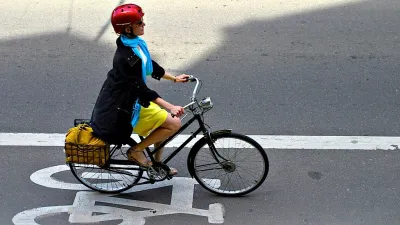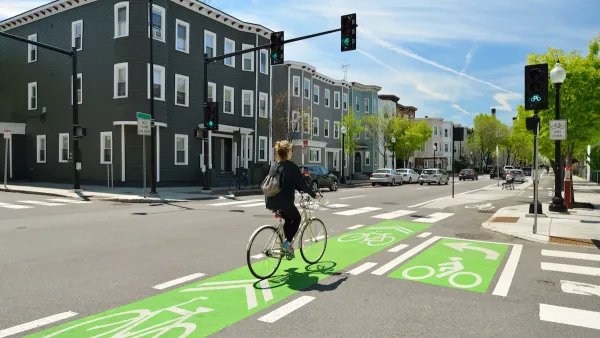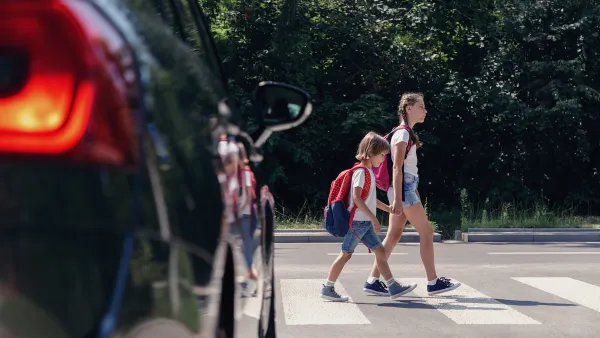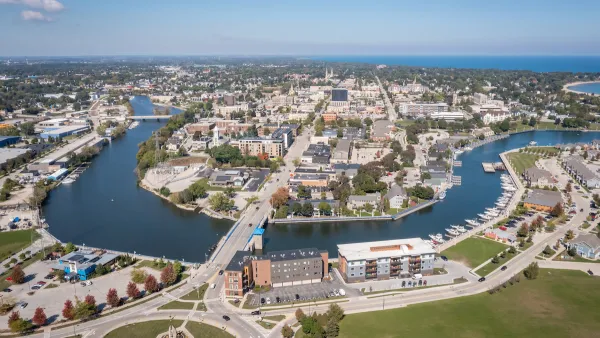Rep. Albert Sires (D-N.J.) introduced the New Opportunities for Bicycle and Pedestrian Infrastructure Financing Act of 2014 (H.R. 3978), modeled on TIFIA, to promote investment in bike and pedestrian facilities to make streets safer for all modes.

Congressman Albio Sires, a member of the House Transportation and Infrastructure Committee, introduced H.R. 3978, a credit assistance pilot program on Jan. 29 after participating in a hearing the previous day of the "Improving the Effectiveness of the Federal Surface Transportation Safety Grant Programs". Sires asked witnesses at the hearing "how the federal government can make our roads safer for all users," writes Denise Copeland of N.J. com's off-road bike blog.
"More than 30,000 people were killed in motor vehicle crashes in 2012, and 17% of those deaths were our roads most vulnerable users: pedestrians and bicyclists. Yet, only 1.5% of federal transportation funding goes towards making our sidewalks and streets safer for them," said Sires in his press release on the hearing.
His bill is modeled on the successful and bipartisan Transportation Infrastructure Finance and Innovation Act (TIFIA) program that "provides Federal credit assistance in the form of direct loans, loan guarantees, and standby lines of credit to finance surface transportation projects of national and regional significance" (according to its Federal Highway Administration webpage).
The New Opportunities for Bicycle and Pedestrian Infrastructure Financing Act of 2014 (NOBPIFA) will allow communities to take advantage of low-cost financing for projects that make streets and sidewalks safer for all users through a new federal credit assistance program that would direct millions specifically for low-income communities.
Sires referenced the report, "The New Majority: Pedaling Towards Equity”, published by League of American Bicyclists and the Sierra Club last May in his press release for H.R. 3978.
While the report highlights strong growth in bicycle ridership across America’s communities, it also raises concerns about the significant challenges faced by many underserved communities. To that point, in 2001 the fatality rate was 23% higher for Hispanic and 30% higher for African-Americans when compared to white riders. This legislation would require that 25% of project funding benefit underserved communities, with the goal of creating a more equitable, safe roadway environment for all Americans.
Should the bill become law, one challenge it will have will be to shorten its acronym, NOBPIFA, to make it easier to pronounce.
FULL STORY: Show your support for for the new Bicycle and Pedestrian Infrastructure Financing Act

Analysis: Cybertruck Fatality Rate Far Exceeds That of Ford Pinto
The Tesla Cybertruck was recalled seven times last year.

National Parks Layoffs Will Cause Communities to Lose Billions
Thousands of essential park workers were laid off this week, just before the busy spring break season.

Retro-silient?: America’s First “Eco-burb,” The Woodlands Turns 50
A master-planned community north of Houston offers lessons on green infrastructure and resilient design, but falls short of its founder’s lofty affordability and walkability goals.

Test News Post 1
This is a summary

Analysis: Cybertruck Fatality Rate Far Exceeds That of Ford Pinto
The Tesla Cybertruck was recalled seven times last year.

Test News Headline 46
Test for the image on the front page.
Urban Design for Planners 1: Software Tools
This six-course series explores essential urban design concepts using open source software and equips planners with the tools they need to participate fully in the urban design process.
Planning for Universal Design
Learn the tools for implementing Universal Design in planning regulations.
EMC Planning Group, Inc.
Planetizen
Planetizen
Mpact (formerly Rail~Volution)
Great Falls Development Authority, Inc.
HUDs Office of Policy Development and Research
NYU Wagner Graduate School of Public Service




























